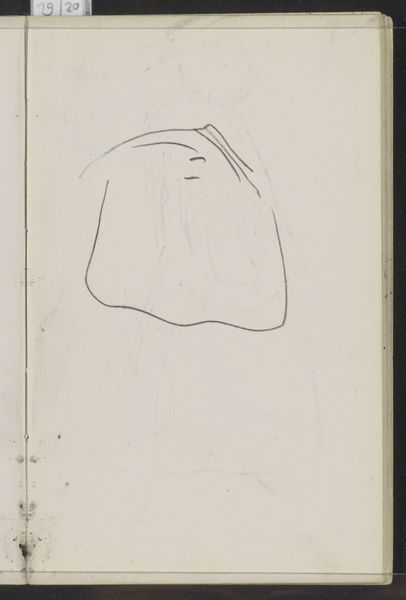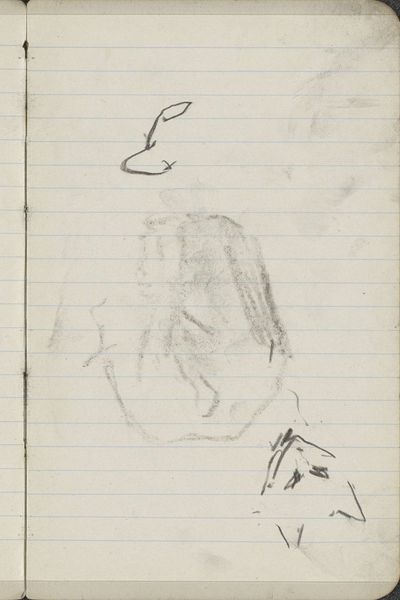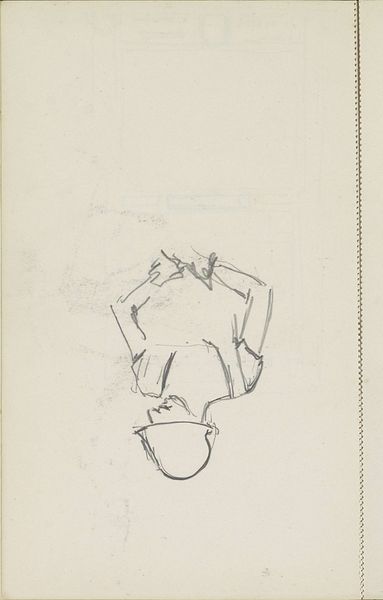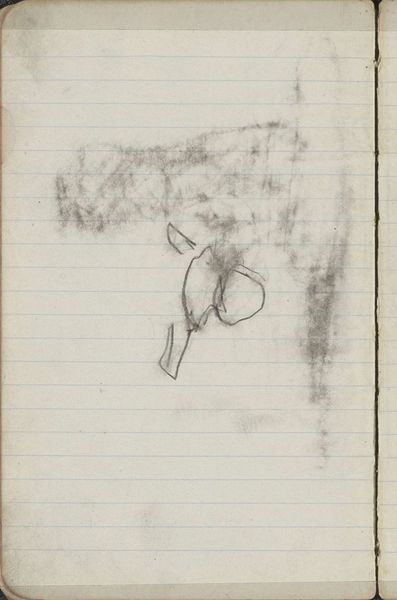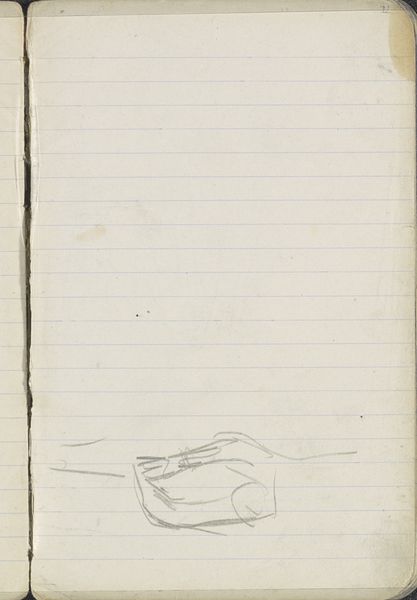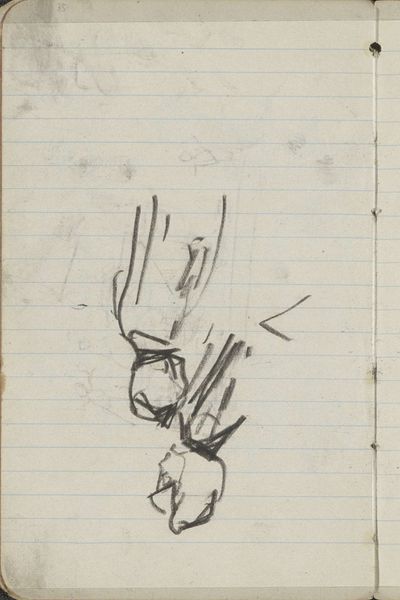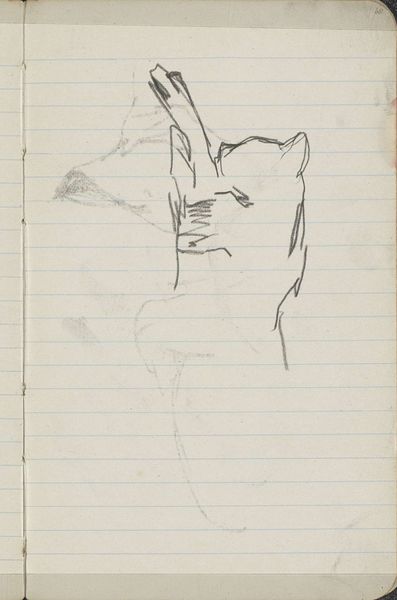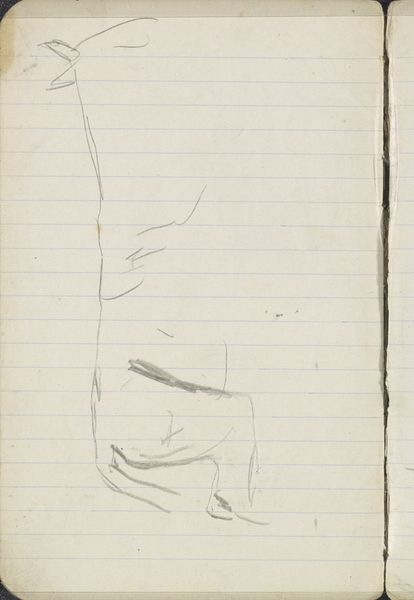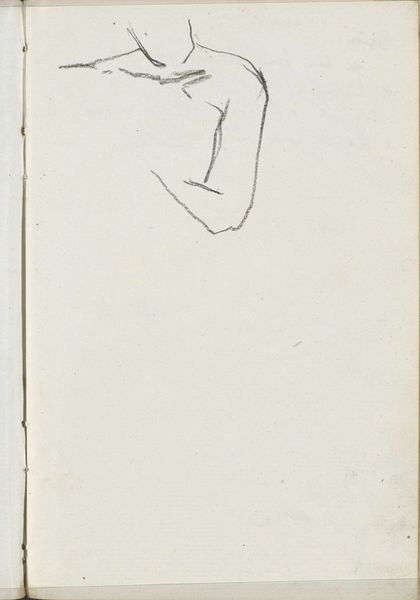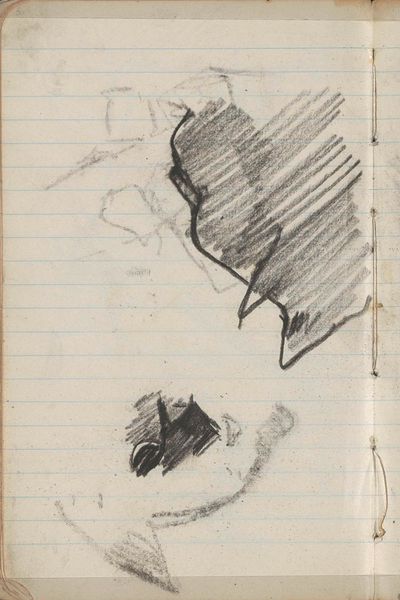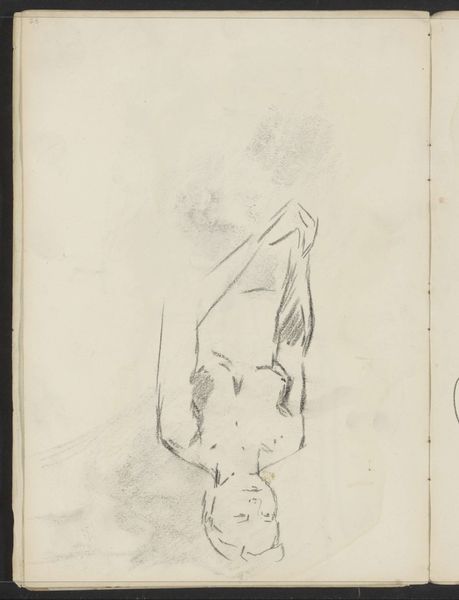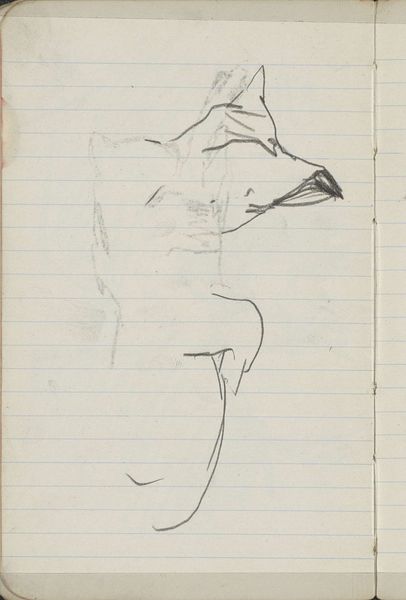
Copyright: Rijks Museum: Open Domain
Editor: This is "Liggende kat" or "Reclining Cat," a pencil drawing from around 1894 by George Hendrik Breitner, housed in the Rijksmuseum. It’s such a casual sketch; you can almost feel the cat shifting in its sleep. How do you read this work? Curator: It’s fascinating to see Breitner, known for his gritty depictions of Amsterdam street life, turn his attention to something so domestic. This sketch, likely from a personal sketchbook, reveals a different side of the artist and invites us to consider the social function of such intimate art making. Was this for personal enjoyment, or might he have seen potential for a larger work? Editor: That's a great point! It definitely has the feeling of just capturing a fleeting moment. Curator: Exactly. The sketch’s casual nature challenges the more formal portraiture conventions prevalent at the time. Consider how the cat, a creature often associated with independence and domesticity, becomes a subject. This also begs the question: Who gets represented in art and why? Breitner is broadening his gaze to even humble corners of daily life. How do we value such fleeting, informal representations compared to grand historical paintings? Editor: I hadn't thought about the art world politics involved even in sketching a cat. I see it differently now. Curator: And note the material: a simple pencil on paper, likely in a sketchbook. This contributes to its accessibility and hints at the democratization of art. No longer are subjects limited to just royalty or religious scenes. Commonplace subjects, observed in casual poses, have emerged, changing the visual language in public institutions. What does the sketchbook reveal, or perhaps conceal, about artistic production? Editor: It’s a really thought-provoking reframing, looking at this tiny cat sketch in the context of art history. Thanks! Curator: My pleasure. It reminds us that even seemingly simple artworks can offer profound insights into broader social and artistic shifts.
Comments
No comments
Be the first to comment and join the conversation on the ultimate creative platform.
